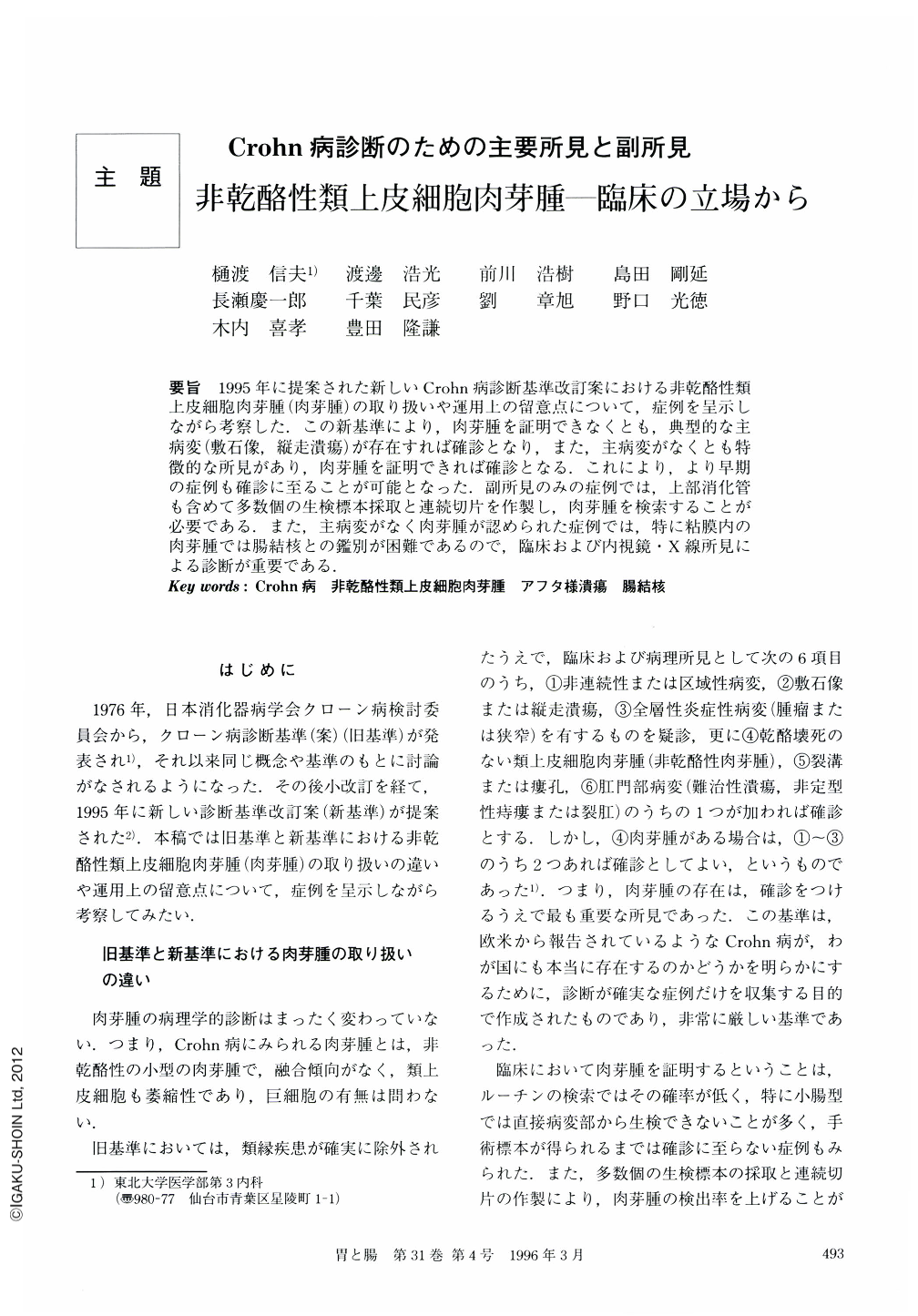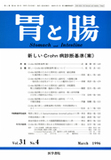Japanese
English
- 有料閲覧
- Abstract 文献概要
- 1ページ目 Look Inside
要旨 1995年に提案された新しいCrohn病診断基準改訂案における非乾酪性類上皮細胞肉芽腫(肉芽腫)の取り扱いや運用上の留意点について,症例を呈示しながら考察した.この新基準により,肉芽腫を証明できなくとも,典型的な主病変(敷石像,縦走潰瘍)が存在すれば確診となり,また,主病変がなくとも特徴的な所見があり,肉芽腫を証明できれば確診となる.これにより,より早期の症例も確診に至ることが可能となった.副所見のみの症例では,上部消化管も含めて多数個の生検標本採取と連続切片を作製し,肉芽腫を検索することが必要である.また,主病変がなく肉芽腫が認められた症例では,特に粘膜内の肉芽腫では腸結核との鑑別が困難であるので,臨床および内視鏡・X線所見による診断が重要である.
New criteria for diagnosis of Crohn's disease were proposed by Prof. Yao, et al in 1995. By the new criteria, cases having typical major lesions, cobblestone appearance and/or longitudinal ulcers (major findings) can be definitely diagnosed as having Crohn's disease, even in the absence of granuloma. In addition, cases having discrete ulcers or aphthoid ulcers aligned along the length of these lesions on both upper and lower gastrointestinal tracts (minor findings) without major lesions can be definitely diagnosed as Crohn's disease when granulomas are detected. These criteria make it possible to diagnose some cases in the initial or early stage. For cases with only minor findings, it is necessary to obtain many biopsy specimens from both the upper and lower gastroinestinal tract and make serial sections in order to detect granulomas. For cases having granulomas and no major lesions, clinical diagnosis must be made carefully by scrutinizing the clinical course and relying on endoscopic and radiographic findings. Because mucosal granulomas in intestinal tuberculosis are small and atrophic and are similar to those in Crohn's disease it is difficult to differentiate them histologically.

Copyright © 1996, Igaku-Shoin Ltd. All rights reserved.


